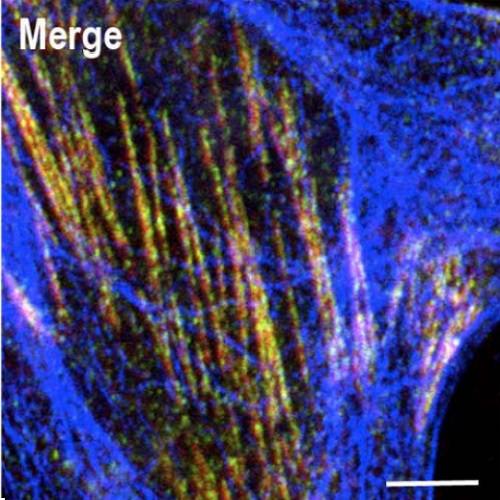Septin6 and Septin7 GTP binding proteins regulate AP-3- and ESCRT-dependent multivesicular body biogenesis.
Septins (SEPTs) form a family of GTP-binding proteins implicated in cytoskeleton and membrane organization, cell division and host/pathogen interactions. The precise function of many family members remains elusive. We show that SEPT6 and SEPT7 complexes bound to F-actin regulate protein sorting during multivesicular body (MVB) biogenesis. These complexes bind AP-3, an adapter complex sorting cargos destined to remain in outer membranes of maturing endosomes, modulate AP-3 membrane interactions and the motility of AP-3-positive endosomes. These SEPT-AP interactions also influence the membrane interaction of ESCRT (endosomal-sorting complex required for transport)-I, which selects ubiquitinated cargos for degradation inside MVBs. Whereas our findings demonstrate that SEPT6 and SEPT7 function in the spatial, temporal organization of AP-3- and ESCRT-coated membrane domains, they uncover an unsuspected coordination of these sorting machineries during MVB biogenesis. This requires the E3 ubiquitin ligase LRSAM1, an AP-3 interactor regulating ESCRT-I sorting activity and whose mutations are linked with Charcot-Marie-Tooth neuropathies.

- PLoS ONE 2014 Nov 07;9(11):e109372
- 2014
- Cell Biology
- 25380047
- PubMed
Enabled by:
